Key Symbols - Hipparcos
Key to symbols used in the Millennium Star Atlas

The size of a star in the Millennium Star Atlas is indicative of its V magnitude. The sizes in the key are for whole magnitude values, but the actual plotted size for any star can be intermediate in size, representing the true magnitude.

A black disk surrounded by an open circle indicates a variable star. The size of the disk represents the median magnitude of the star. The degree of variability can be determined by the pattern of the surrounding circle: a solid line represents variability of more than 1 magnitude; a dashed circle means variation is in the range 0.1 to 1.0 mag, while a dotted circle indicates variability of less than 0.1 mag.
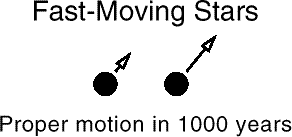
Stars with a proper motion greater than 0.2 arsec per year are all plotted with an arrow attached which shows the direction of motion and how far the star will travel in 1000 years.
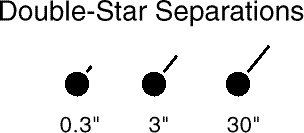
If the components of a double or multiple system are more than 30 arsec apart then they are plotted individually with overlapping disks. If the separation is less than 30 arcsec then one disk, whose size represents the combined light of the system is plotted at the position of the brighter member. A line jutting from this disk indicates the location of the companion.
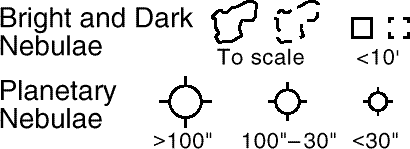
Bright nebulae more than 10 arcmin in extent are marked by a continuous irregular outline, smaller nebulae are indicated by an open square. Dark nebulae follow the same notation except that the lines are dashed. Planetary nebulae are represented by a circle with protruding spikes.
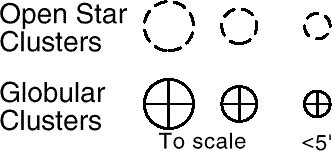
Open clusters are indicated by a dashed open circle whose size represents the approximate visual extent of the cluster. A solid line circle and cross represents a globular cluster.

The approximate extent and orientation of galaxies are indicated by these symbols.
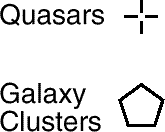
An open centered cross is used to mark the location of quasars and some high-energy galactic sources. A cluster of galaxies with at least 10 members of 16 mag or brighter is indicated by the pentagon.
- Removed a total of (8) style text-align:center;
- Removed a total of (1) align=center.
Links |
- Removed a total of (1) border attribute.
- Removed a total of (1) cellpadding attribute.
- Removed a total of (1) cellspacing attribute.








































 Sign in
Sign in
 Science & Technology
Science & Technology